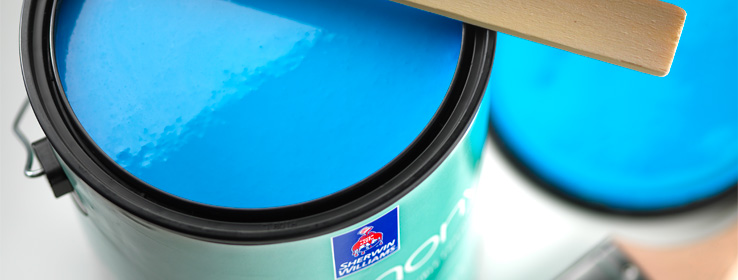What does "quality" mean, and what benefits do high-quality paints provide?
Painting is an investment for your client – in time, money and labor. You may have heard your contractors tell you or your clients that it pays to spend a little extra to get a high-quality, long-lasting finish. But what does "quality" mean, and what benefits do high-quality paints provide?
A high-quality coating starts with ingredients that allow paint to apply more easily, look better and last longer. The following four key ingredients affect the quality of paint.
Pigment
Two types of pigment go into a can of paint. First are "prime" pigments. These provide color and hide. Second are low-cost "extender" pigments. They add bulk to the product, but add little value in terms of color.
Higher-quality paints have more of the all-important prime pigments, which provide easier application, greater durability and better color retention.
Binders
There are a variety of binders used in today's paints. Latex paints contain either 100 percent acrylic, styrene-acrylic or vinyl acrylic binders. Oil paints typically contain linseed oil, soya oil or modified oils called alkyds. The type, quality and amount of binder affect everything from stain resistance and gloss to adhesion and crack resistance.
Higher-quality binders adhere to surfaces better and provide enhanced film integrity and longer-lasting performance. This makes them more resistant to cracking, blistering and peeling.
Liquids
The liquid provides no added performance benefits. It's simply the vehicle that allows you to get the paint from the can to the surface. Top-quality paints have a greater ratio of solids – pigments and binders – to liquids.
Additives
Additives are ingredients that give paint a specific benefit that it might not otherwise have. Common additives in higher-end paints include:
Rheology modifiers to provide better hide through flow and leveling of the coating.
Mildewcides to keep mildew in check.
Dispersing agents to keep pigments evenly distributed.
Preservatives to prevent spoilage.
Cost per year of service
Before you specify paint based on price, consider this: Lower-quality paints require more coats to cover and, because they aren't as durable, need maintenance much sooner. This is especially true with exterior coatings.
So, to get a true idea of costs, look beyond the initial price tag and compare the cost per year of service. For example, say you're painting a home that requires 20 gallons of exterior latex. You have two options:
Buy a lower grade paint at $20 per gallon with an expected life span of six years.
Buy a high-quality 25-year paint at $35 per gallon.
In the first scenario, your out-of-pocket cost would be $400. Since the paint is expected to last six years, the cost per year is $67. In the second scenario, your material cost is $700. But because the paint has a 25-year lifespan, your cost per year is only $28.
By choosing the higher-priced, higher-quality paint, you actually save your customer $39 per year in paint expense. And that's just the material cost ¾ add labor into the equation and the money your customer saves in the long run increases significantly.
When it comes to selecting paint, quality does matter. Whether you're looking at interior or exterior paint, and whether you're considering adhesion, durability or hiding properties, a better-quality paint will give you better service – both short and long term.









